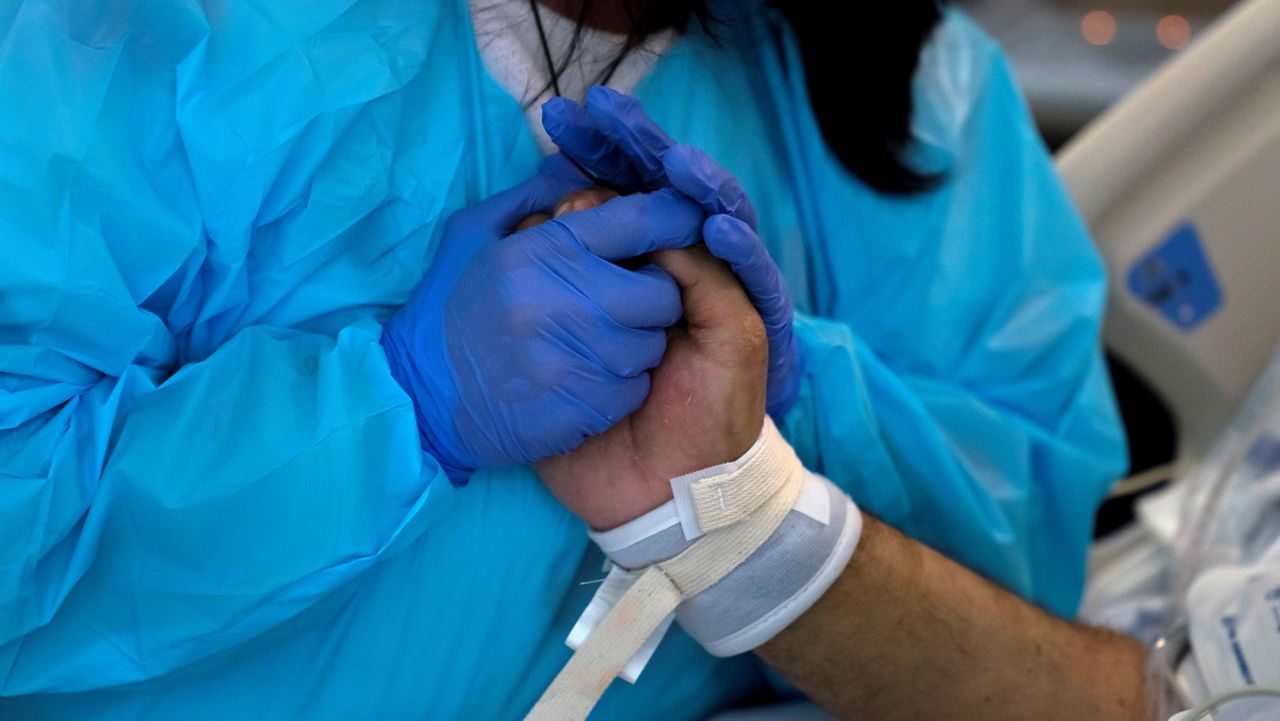SANTA ANA, Calif. (CNS) — Orange County's COVID-19 hospitalizations dropped a bit Saturday, declining from 210 on Friday to 204, according to state figures.
The number of those patients in intensive care fell from 39 to 37.
The county had 23.4% of its ICU beds available and 70% of its ventilators.
The latest figures come one day after the county reported 244 new cases of COVID-19 and five additional fatalities, raising the cumulative totals to 301,188 cases and 5,518 deaths since the pandemic began, according to the Orange County Health Care Agency.
The OCHCA does not report case and death numbers on the weekend.
"We're in a gradual decline," Dr. Regina Chinsio-Kwong, the county's deputy county health officer, told reporters Friday.
She added that "case rates are very slowly declining," compared to previous surges when "case rates went down more significantly compared to this."
There has been a bump up from two to six in the number of children with COVID-19 in intensive care units since last week, Chinsio-Kwong said. She encouraged parents to keep a close eye on their children following a COVID-19 diagnosis because even if they recover quickly, there could be issues down the line with Multisystem Inflammatory Syndrome in Children, or MIS-C.
"For kids who get COVID, even if they didn't have that many symptoms, it's the period after — about a month later — when they'll still need to watch their kid closely if they develop any other symptoms of ongoing fevers, ongoing headaches, shortness of breath," Chinsio-Kwong said. "Children can get MIS-C. Some of these not hospitalized (initially) can get hospitalized. ... The expectation is we'll likely see a rise in MIS-C in children in upcoming weeks."
Of the five deaths reported Friday, one occurred in September, and the others happened in January. The death toll for this month so far is two, while the number for September is 137 and for August 168.
The death toll for July is 28, 19 for June, 26 for May, 46 for April, 199 for March, 615 for February, 1,585 for January — the deadliest month of the pandemic — and 976 for December, the next deadliest.
Chinsio-Kwong said it is not unusual for death reports to be delayed.
"We are reliant on hospitals and the coroner's office and physicians offices to give us death certificates and relate it to COVID," Chinsio-Kwong said.
Most of those who died in September were unvaccinated. The same trend is true in the local hospitals, she said.
Chinsio-Kwong again encouraged residents to get flu and COVID-19 shots and that it is safe to get both.
"Flu is around the corner — technically it's already here," she said. "It's between October and May and we'll see a spike in November."
U.S. Centers for Disease Control and Prevention officials are projecting a "more severe flu season compared with last season" because "many people were not exposed to the flu last season or did not get vaccinated. The last thing you want to do is deal with COVID as well as the flu."
Andrew Noymer, an epidemiologist and UC Irvine professor of population health and disease prevention, told City News Service he is not as concerned about a double whammy with COVID-19 and the flu.
"People said the same thing last winter, so I'll believe it when I see it," Noymer said. "I do expect more flu this winter than last winter. ... Flu will eventually come back and it will be this winter, but it's too early to say it will be a calamity."
On Tuesday, the county's weekly COVID case rate per 100,000 residents improved from 8 to 7, while the testing-positivity rate fell from 2.9% to 2.7%. The county's Health Equity Quartile positivity rate — which measures progress in low-income communities — dropped from 3.1% to 3%.
"Slow and steady wins the race," Noymer said. "I'd rather see faster improvement, but if we can't have that I'll take this. ... The numbers are looking good."
As of last Saturday, the county's new case rate per 100,000 people was 3.1 among fully vaccinated residents and 14.6 for the unvaccinated.
The number of fully vaccinated residents in Orange County increased from 2,135,325 on Oct. 7 to 2,147,048 on Thursday.
That number includes an increase from 1,994,678 to 2,005,340 of residents who have received the two-dose regimen of vaccines from Pfizer or Moderna. The number of residents receiving the one-dose Johnson & Johnson vaccine increased from 140,647 to 141,708.
There are 193,701 residents who have received one dose of the Pfizer or Moderna vaccines.
The top providers of vaccines are the OCHCA at 26.4%, CVS at 18.4%, Walgreens at 6.2%, Kaiser Permanente at 5.4%, UC Irvine Health at 2.7%; Walmart at 1.9%, Safeway, Vons and Pavilions at 1.2%; Families Together of Orange County at 1.1%, and multiple others below 1%.
Chinsio-Kwong said Orange County has seen the same trend as elsewhere in Southern California of a gradual decline in vaccine demand.



